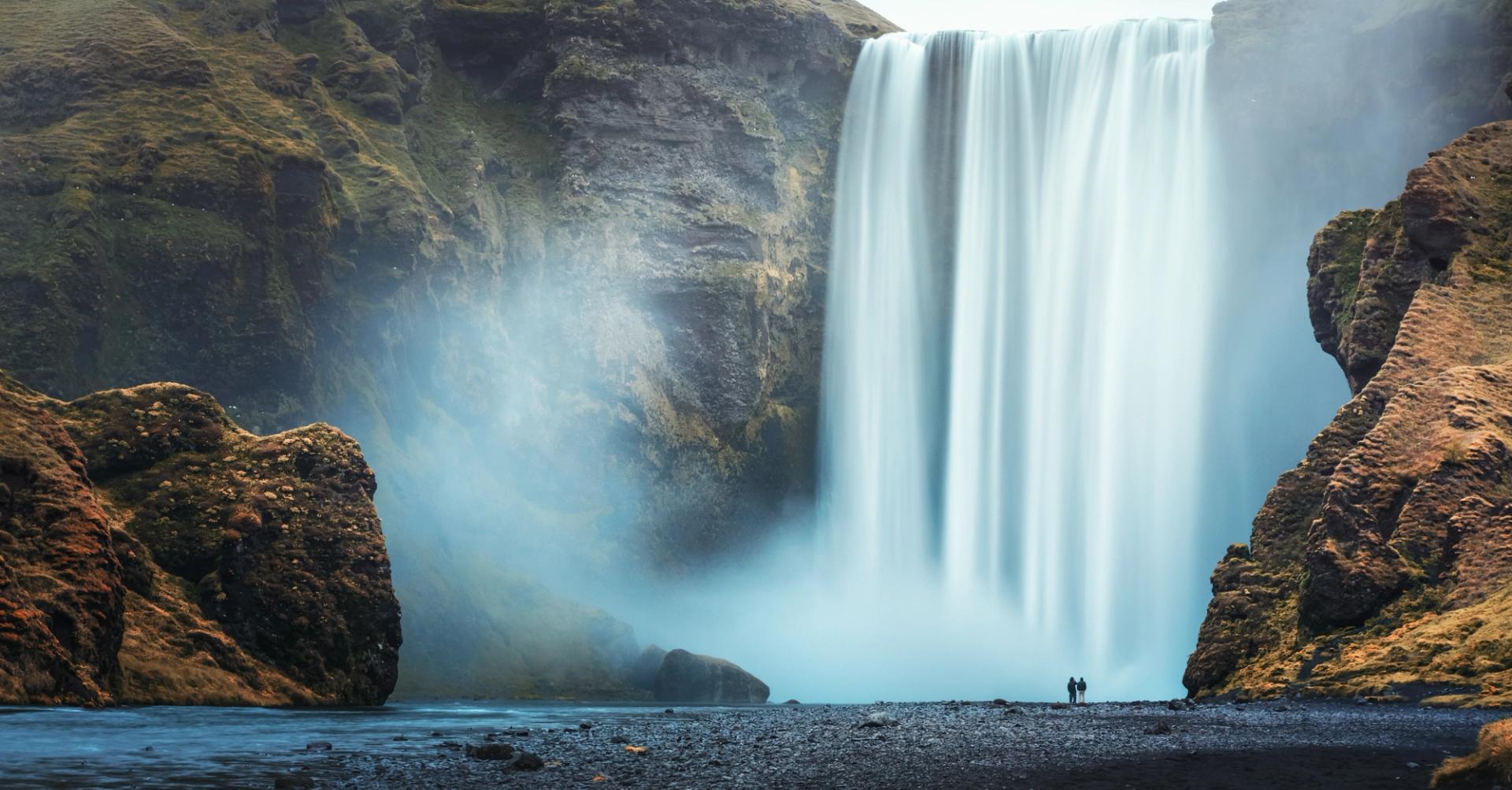 Waterfalls
WaterfallsTop 10 Most Beautiful Waterfalls in Iceland
Iceland is world-renowned for its bubbling volcanoes and pure glaciers, hence the nickname "Land of Fire and Ice." The two combine to form some of the largest and most exquisite waterfalls humanity has ever seen. With over 10,000 waterfalls to explore, you have no excuse for not visiting at least one before you depart. Should you be at a loss for which ones are worth checking out, refer to this list of the top 10 most beautiful waterfalls in Iceland.
Seljalandsfoss
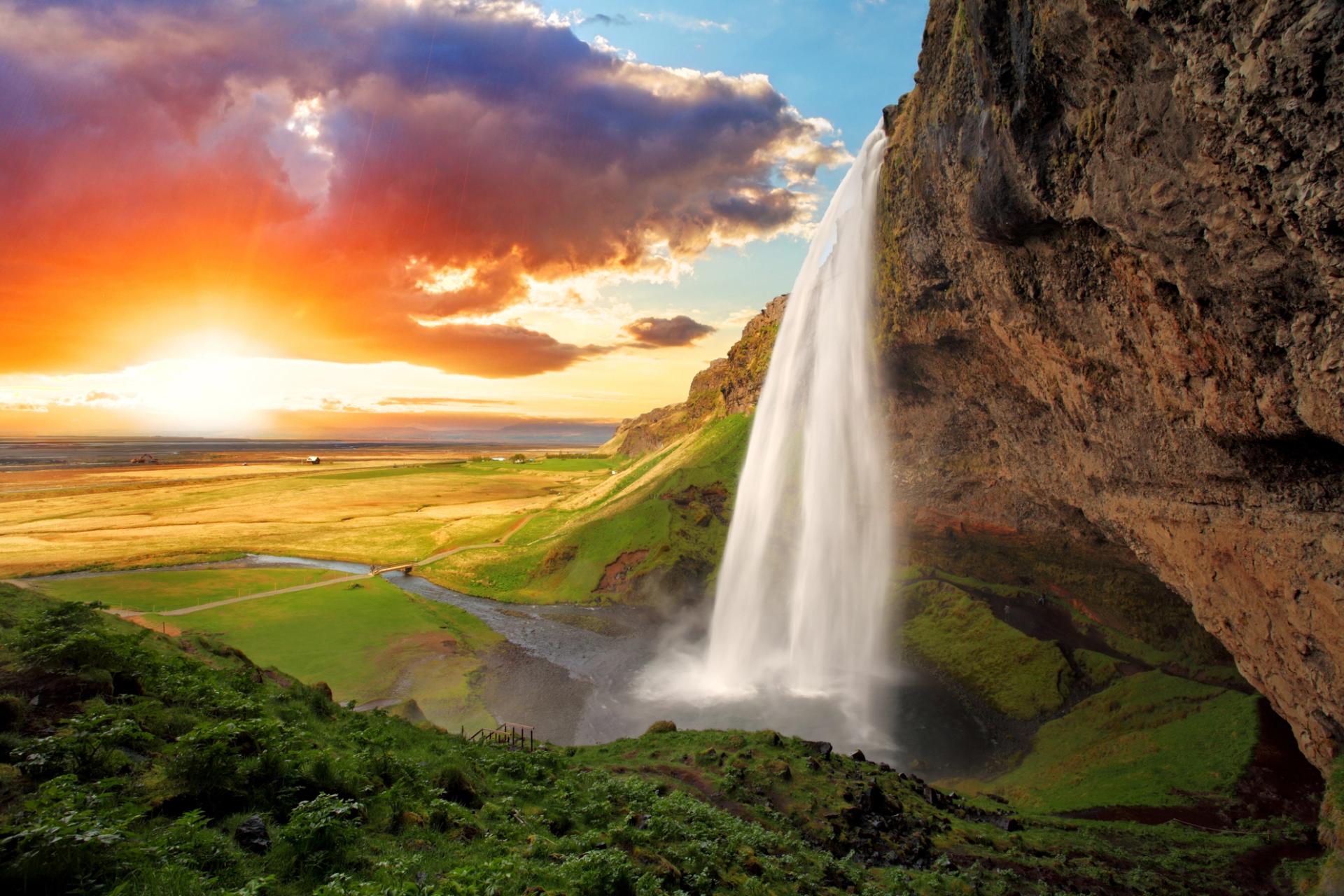
One of the most photographed waterfalls in Iceland is the Seljalandsfoss (#Sellers Falls).
The breathtaking cataract stands at 196.85 ft. (60 m), located in Þórsmerkurvegur, which is 80 miles (128 km) from Reykjavik.
Any traveler who wants to get there would need to get a quality vehicle from the best car rental service in Iceland to ensure they arrive safely.
You can hit two birds with one stone by driving to both Seljalandsfoss and another nearby waterfall called Skogafoss on the same day as they are only 18.5 miles (30 km) apart.
Another reason why Seljalandsfoss is our number one on this list is the accessibility from the Ring Road.
When you arrive there, you can simply park your car, pay for the spot, and start mingling with other travelers before venturing behind the cascading water to take sensational photos.
The huge cave-like structure with torrents showering down in front can literally leave you breathless, especially during sunrise and sunset. Such a misty ordeal is unforgettable.
However, stay cautious as you walk around during winter, as the icy paths can get relatively dangerous if you aren’t putting on the right footwear.
Dettifoss

Dettifoss makes the list of the best waterfalls in Iceland because it’s the most powerful in the country and the second most powerful in Europe behind Rhine Falls.
Dettifoss is 330 ft. (100m) wide, which enables it to sending an impressive 7,000 ft3 (200 m3)/sec of water down a 144 ft. (44 m) cliff.
The voluminous waterfall is situated around 300 miles (482 km) from Reykjavik, in Vatnajökull National Park.
The best way to get to “The Beast,” as it’s called by the locals is by staying in Akureyri, a small town in Northern Iceland.
To reach Dettifoss, you’ll need to drive on the Ring Road, then detour to any of the two roads that lead to the viewing platforms.
Before you even see the falls, you’ll hear a roaring sound that builds suspense and excitement as you approach.
Traces of the misty plume will spray on you as you get closer and closer until you're blown away by the sublime display when you finally arrive.
Depending on the route you take, you can view the waterfall from various vantage points and angles.
But to take in the elegance of the moment, you'll need to take a hike on the Ásbyrgi Canyon as the cascades and evaporates onto your delicate skin.
Skógafoss
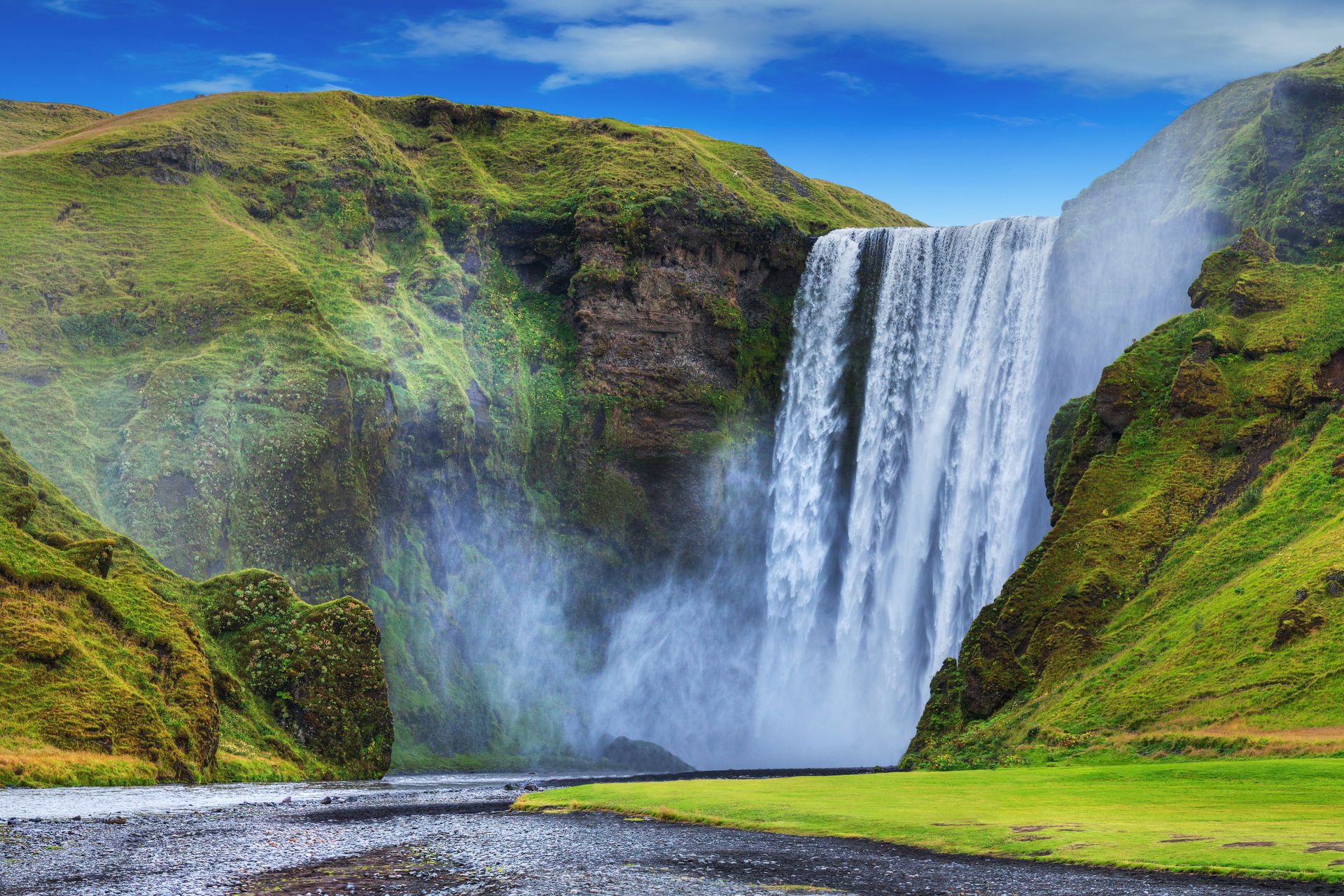
What makes the Skógafoss one of the most beautiful waterfalls in Iceland is the double rainbow that you see during the interplay of sprays of water and sunlight.
Like its splendid neighbor, Seljalandsfoss – Skógafoss stands at 197 ft. (60 m) but is 50 ft. (14 m) broader at 82 ft. (25 m).
The dramatic waterfall is super-accessible when traveling along the Ring Road. Upon arriving, you’ll notice a stupendous steam plume that produces rainbows as the sun's rays pass through the traces of water in the air.
According to Icelandic folklore, you can find secret treasure behind the veil of gushing water.
Sadly, the flow is so strong that it’s impossible to step behind it, and even if you managed to, you’ll have to fight off the troll legends that guard the treasure 24hours a day.
Stories aside, there are two points to view Skógafoss – the first being base of the waterfall, which allows for a stunning perspective of the natural feature as it ascends over you.
Note that there's no guarantee that you'll manage to stay dry at this point.
The other point of observation is at the top of the waterfall, where you’ll have to use the wooden staircases to go up the sea cliff until you reach the top of the waterfall.
Many choose to pass on this option as it needs a bit of effort, but those that succeed are often blessed with drop-dead gorgeous views of the South Coast countryside.
Glymur Waterfall

Formerly known as the tallest waterfall in Iceland, Glymur waterfall now holds the second spot at 649 ft. (198 m) after being dethroned by the hard-to-access Morsárfoss.
A trip to this spectacle takes about 90 minutes from the capital, and then a 2-hour hike to reach the Hvalfjörður fjord, where the waterfall is located.
If you’re a seeker of fortune in daring places, then the trail to Glymur will dazzle you.
You’ll come across moss-adorned caves, the Botnsa River, and steep table-top hillsides that will tempt you to take a photo at every turn.
After walking for about an hour, you’ll quickly realize that hiking to Glymur is no child’s play.
You’ll have to be fit enough to cover a distance of 4.6 miles (7.5 km) in a few hours.
To make the trip easier for yourself, make sure you wear the proper trekking shoes and attire, as well as an HD camera to snap the precious moments.
Hraunfossar

Though the “Lava Falls” are so serene and peaceful, they deserve a spot on our list as they are a unique sight to behold.
The appealing dynamic flow of the falls looks like veins running on someone's body.
There are a variety of small streams on the Hvítá River interconnecting and branching off repeatedly across the lava field before quietly discharging over the cliffs.
The streamlets that characterize Hraunfossar stretch out to about 2952.76 ft. (900 m) over the lava, creating uncommon scenery.
By the way, if you venture farther upstream, you’ll encounter another beautiful waterfall that didn’t make the list called Barnafoss.
Hraunfossar is less than 2 hours away from Reykjavík when driving.
To get there, you’ll need to head north on Route 1 and turn right onto Route 50, just before reaching Borgarnes.
Route 50 will take you straight into Route 518, which ultimately leads you to these milky blue waterfalls.
Unlike many others on the list, you can simply relax in the car, while enjoying the jaw-dropping views Hraunfossar has to offer.
Bruarfoss
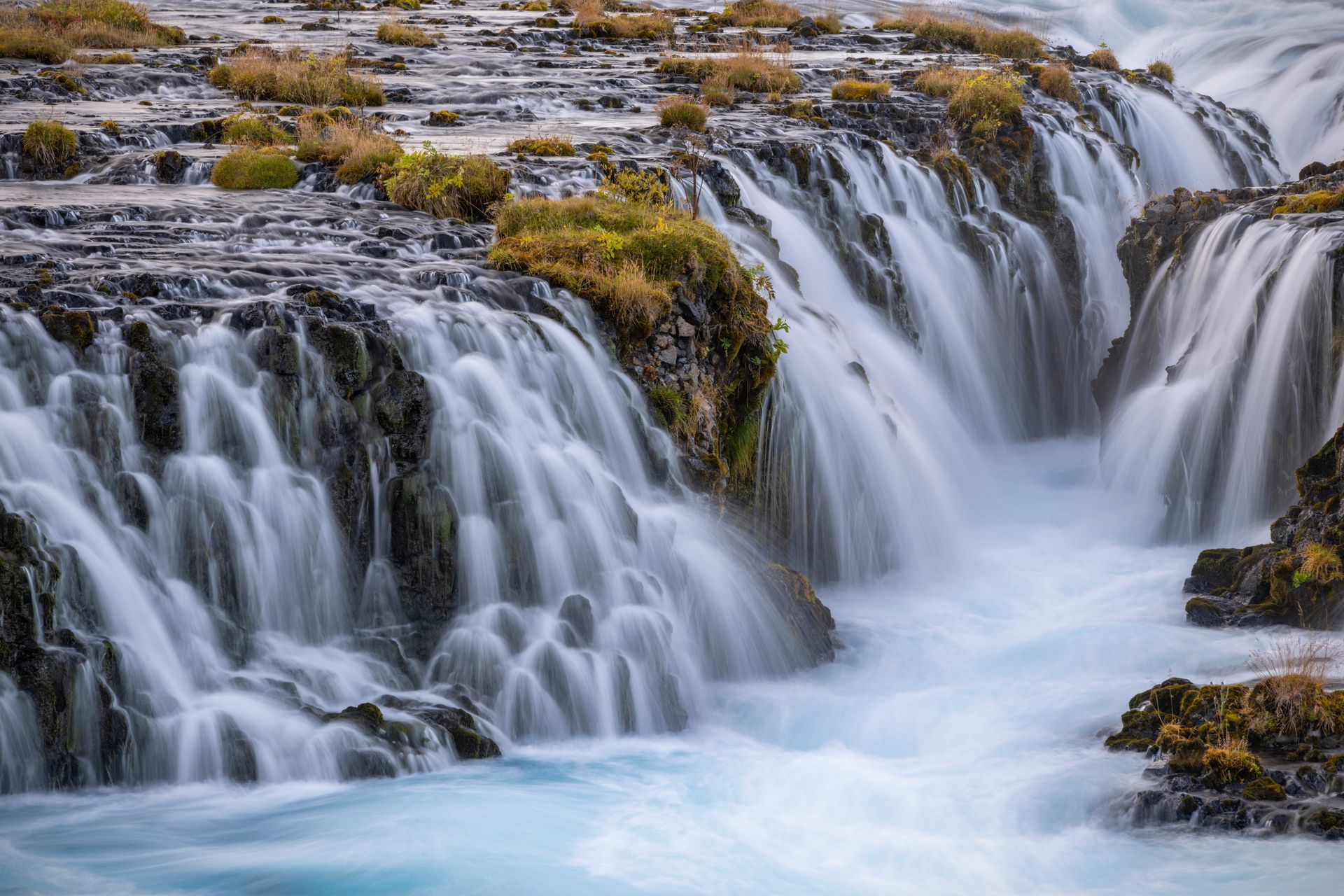
Many people consider Bruarfoss (Bridge Falls) as one of the best waterfalls in Iceland, as it is a vital component of the Golden Circle.
You can find these small waterfalls when you take a trip to the Grimsnes area of Southwest Iceland.
The encapsulating blue waters falling into the bottomless gorge produce a phenomenal scene perfect for taking unforgettable photos.
Be as it may, Bruarfoss is not as sought-after as it used to be. The shortest driveway to the waterfall was closed due to the bad behavior of tourists.
If you don’t mind hiking to experience the best views of the falls, then you’ll have to trek on relatively flat terrain until you reach the Bruara River, where your hike will magically transform into an adventure.
There you’ll encounter several cascades that will inspire you to push on until you get to the final destination.
You’ll know you’ve arrived when you see blue glacier water gushing out of the black lava rocks.
If you’re in the capital city, getting to the “Bridge Falls” will take you about an hour's drive, so make sure you check it out.
Dynjandi
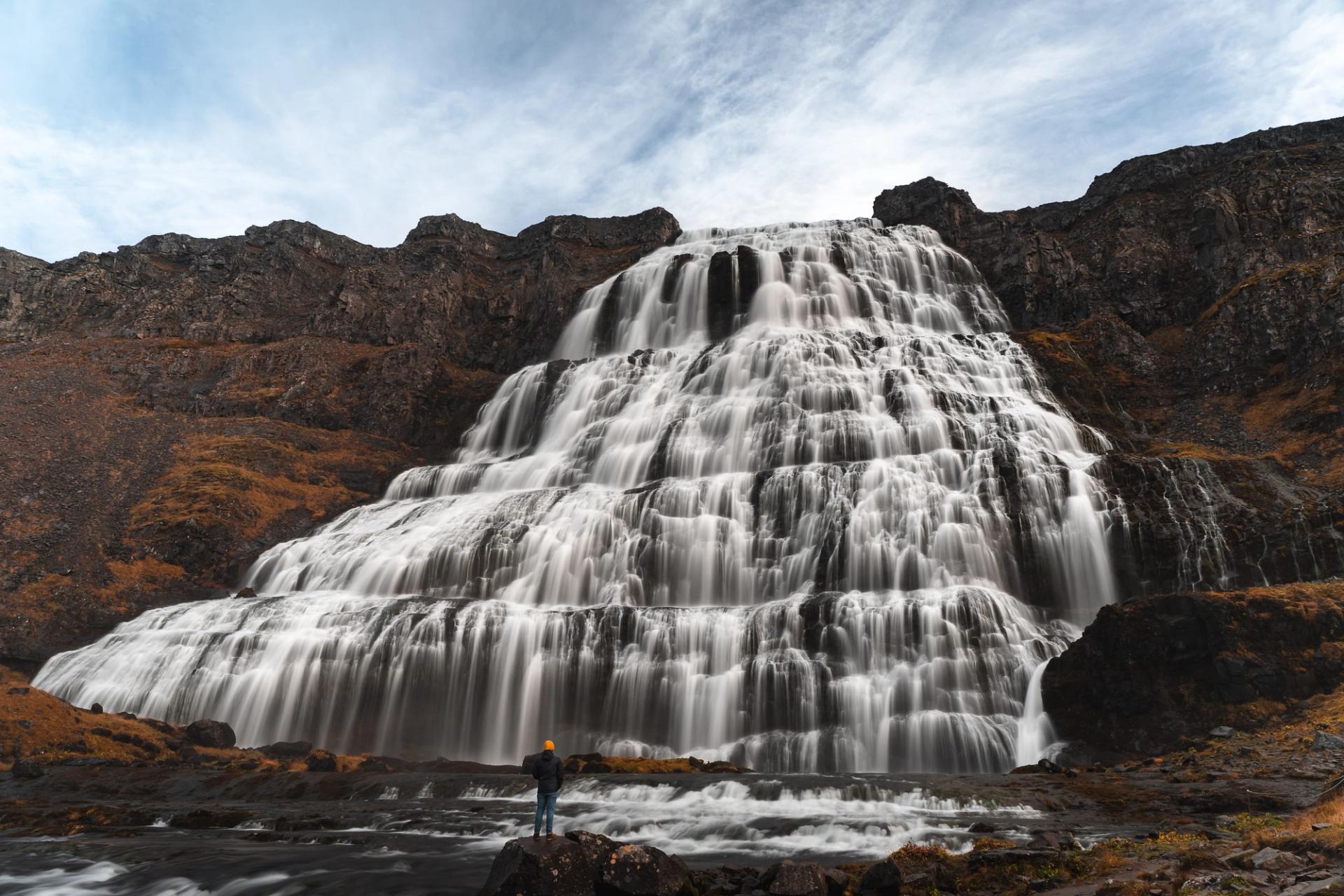
Also known as Fjallfoss, Dynjandi translates to “Thunderous,” which gives you a clue of what you should expect when heading to this adorable water spectacle situated in the Westfjords.
Dynjandi stands at a height of around 328.084 ft. (100 m), however, guests can view various other waterfalls below it.
Most of these mini waterfalls have names like Hæstahjallafoss and Strompgljúfrafoss, which can be a bit of a tongue twister for foreigners, so I’ll leave them out list.
It will take you roughly 15 minutes to get from your car to Dynjandi waterfalls. While on your journey, you’ll be blown away by the untouched natural surroundings that make up most of Westfjords.
Personally, Dynjandi falls are some of my favorite to visit, which is why I do just that once every two years.
Goðafoss Waterfall

The most iconic of the Skjalfandafljot waterfalls is Goðafoss. The wonder has a height of 39 ft. (12 m) and a width of 98 ft. (30 m).
The Sagas reveal to us that Chieftain Thorgeir Ljosvetningagodi threw pagan idols into the falls to settle a religious dispute back in the day.
This was said to be a symbol of Iceland’s conversion to Christianity, hence the English translated name of the “Waterfall of the Gods.”
Indeed, if you live to witness the enchanting beauty of the falls, you’ll convert into a true evangelist of Goðafoss, spreading share-worthy photos that will inspire your loved ones.
Do you know what makes the spot even more heavenly?
The scenery of the gnarled lava fields (left over by the Trölladyngja volcano) surrounding the waterfall. This makes Goðafoss a must-visit for those of you who haven’t paid the Ancient Gods a visit.
Gullfoss Waterfall
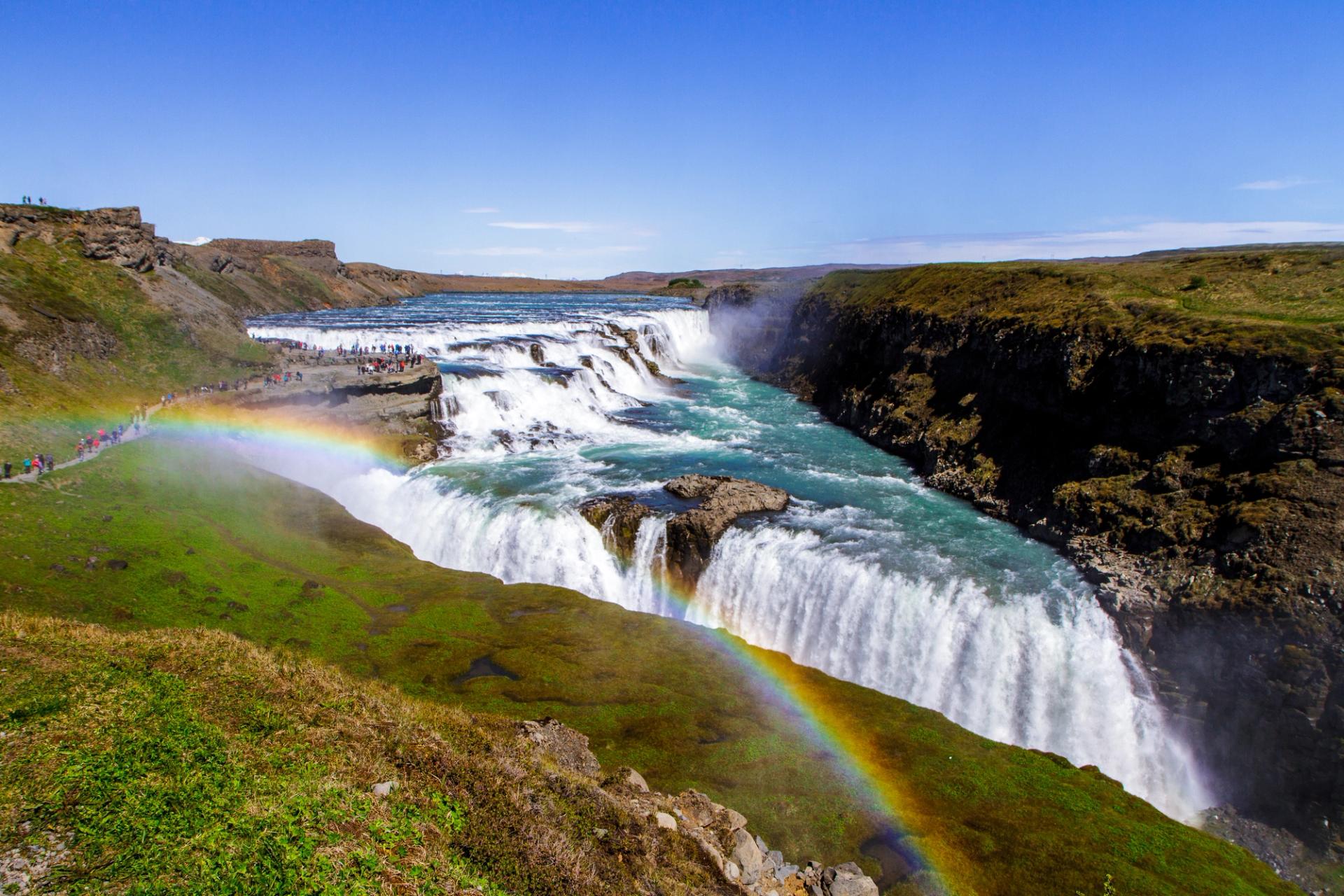
“The Golden Waterfall” is hands-down the most famous Icelandic waterfall, as it sits on the Golden Circle (a popular tourist trail).
The circle spreads out across two main tourist attractions: the Thingvellir National Park and Geysir Geothermal Area.
Most visitors who visit these two areas end up also visiting the waterfall.
Because Gullfoss is the one that lent the trail its name through a special accreditation, we believe it’s safe to say that the “Golden Waterfall” is the star attraction here.
Gullfoss is fed by the Hvita River in South Iceland, where it flows down 105 ft. (32 m) via two tiers into a river gorge.
The waterfall starts with a 35.97 ft. (11 m) plunge, followed by another 68.67 ft. (21 m) one, before disappearing into a crevice that seems to slip into the center of the earth.
If you want to get close and personal with the falls, you can move cautiously towards them through the available paths.
There you’ll feel the relaxing mist spray your face, releasing feel-good hormones into your bloodstream.
Morsárfoss
For those of you who are extreme junkies, this entry is for you!
Our last entry on the list is Iceland’s tallest waterfall, measuring a height of 745.56 ft. (228 m).
Scientists believe that Morsárfoss became visible in 2007 when melting ice on Morsárjökull opened up the water flow.
Nonetheless, records show that the height was confirmed in 2011, dethroning Glymur waterfall from the top spot.
What leaves will leave your heart pumping rhythmically is not just the height or dramatic drop, but also the small waterfalls that cascade around the phenomenon.
If you want to get to the Morsárfoss, all we can tell you is that it’s not going to be easy. In fact, it’s not advisable to hike to it unless you are a glacial hiking expert.
So why the hell did we include it on the list, you might be asking yourself.
Well, the short answer is – it deserves to be on it.
Unlike other waterfalls on this list, this one is to be experienced from afar, rather than hiking towards it and then enjoying the moment.
Find the perfect spot, take out your camera, and start shooting!
You’ll be blown away by how people will react to your sensational uploads.
Final Thoughts
Who knew such a small island like Iceland could boast of such endless amounts of natural wonders?
These are just ten of the thousands of waterfalls you’ll find here.
For more ideas on what to do in Iceland be sure to check out the 10 best things to do in Iceland or if you need help planning your trip in Iceland, contact us and we will help you out!
Hope you enjoy your trip in Iceland.
Latest Blog Posts
 Guides
GuidesThe 2022 Eruption of Fagradalsfjall Volcano - An Unforgettable Iceland Volcano Eruption
Iceland has become a top destination for mind-blowing mountain hikes, volcanic hot springs, and icy glaciers. Adventurers flock to the land of fire and ice to experience these thrilling opportunities! So it is no wonder why Iceland's volcanic eruptions attract visitors from all over the world!
 Waterfalls
WaterfallsGuide to Svartifoss Waterfall in Iceland
Svartifoss, or the 'Black Waterfall', is an exquisite natural wonder tucked away in the Vatnajökull National Park of Iceland. Known for its distinctive basalt columns and cascading water, this waterfall is a must-see for nature lovers and travelers.
 Itineraries
ItinerariesTop 11 Must-Visit Volcanic Sites in Iceland
Iceland has over 130 volcanoes located throughout the country, with 30 of them still active today. Some of them are famous for recent volcanic eruptions, while others have not erupted in thousands of years. There are so many notable Iceland volcanoes, it is hard to know which ones you can visit. With the nickname of The Land of Fire and Ice, you know you won’t be disappointed when it comes to Iceland's volcanic sites. Here are our top 11 must-visit volcanic sites in Iceland!